Cross section in a leaf of Pistia stratiotes
Commonly called water lettuce, Pistia stratiotes, in Aracaceae family, is a free-floating, aquatic perennial plant. It belongs to hydrophytes and originates from South America. It is frequently used as an ornamental plant in water gardens.In natural environment it floats on the water surface of fresh waterways lakes, ponds, and streams in nearly all tropical and subtropical regions. It can multiply by seeds or by vegetative offshoots formed on stolons. Pistia stratiotes is included in the data base of invasive species killing native submerged plants and reducing biodiversity in many tropical regions. A large number of medicinal properties are attributed this plant, particularly leaves.
The leaves are fleshy, grey – green with parallel venation typical of a monocotyledon and form a rosette singly or connected to others by stolon’s. Their surface is covered with many trichomes.
Below photographs of Pistia stratiotes a floating hydrophyte in the tropical greenhouse in Botanic Garden of Geneva.

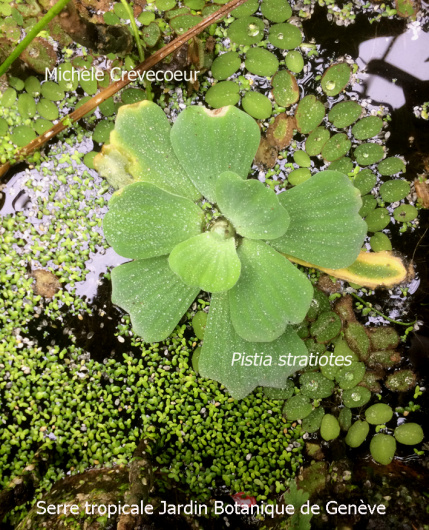
Micrographs of sections in a leaf are shown below. The sections are paraffin sections 10 µm thick stained with astra blue – fuchsin basic.
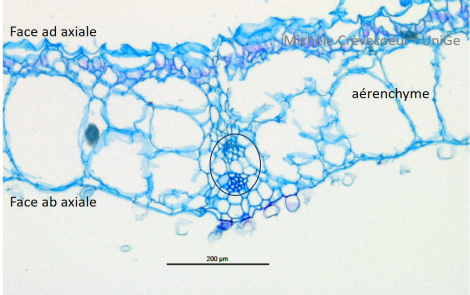
Part of the section illustrating the aerenchyma toward the abaxial part of the mesophyll. A vascular bundle is seen (blue oval form).
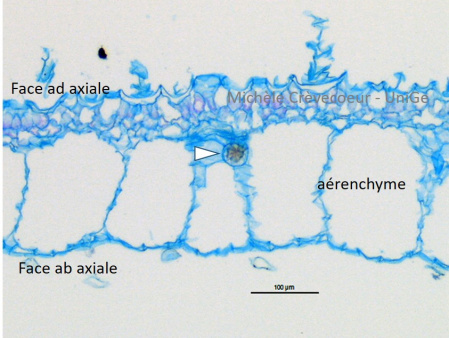
Part of the aerenchyma of the abaxial face and a cell containing calcium oxalate crystals (white arrow).
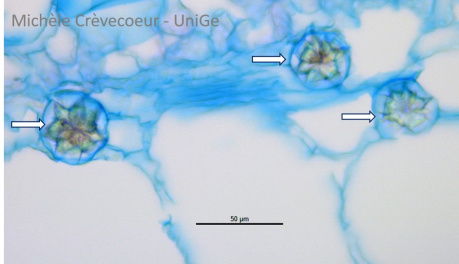
Three cells containing calcium oxalate crystals that are abundant in this leaf as in other organs of this plant.
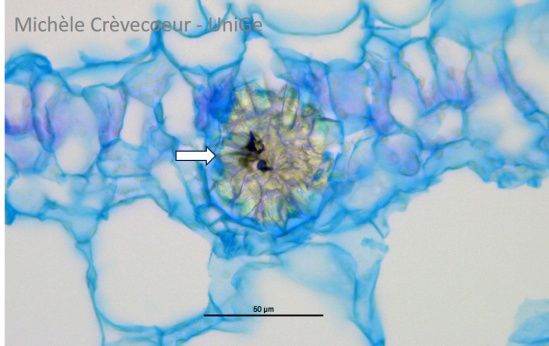
High magnification view of a particular cell of parenchyma (idiodblast) containing an agregate of calcium oxalate crystals with different orientations (druse).